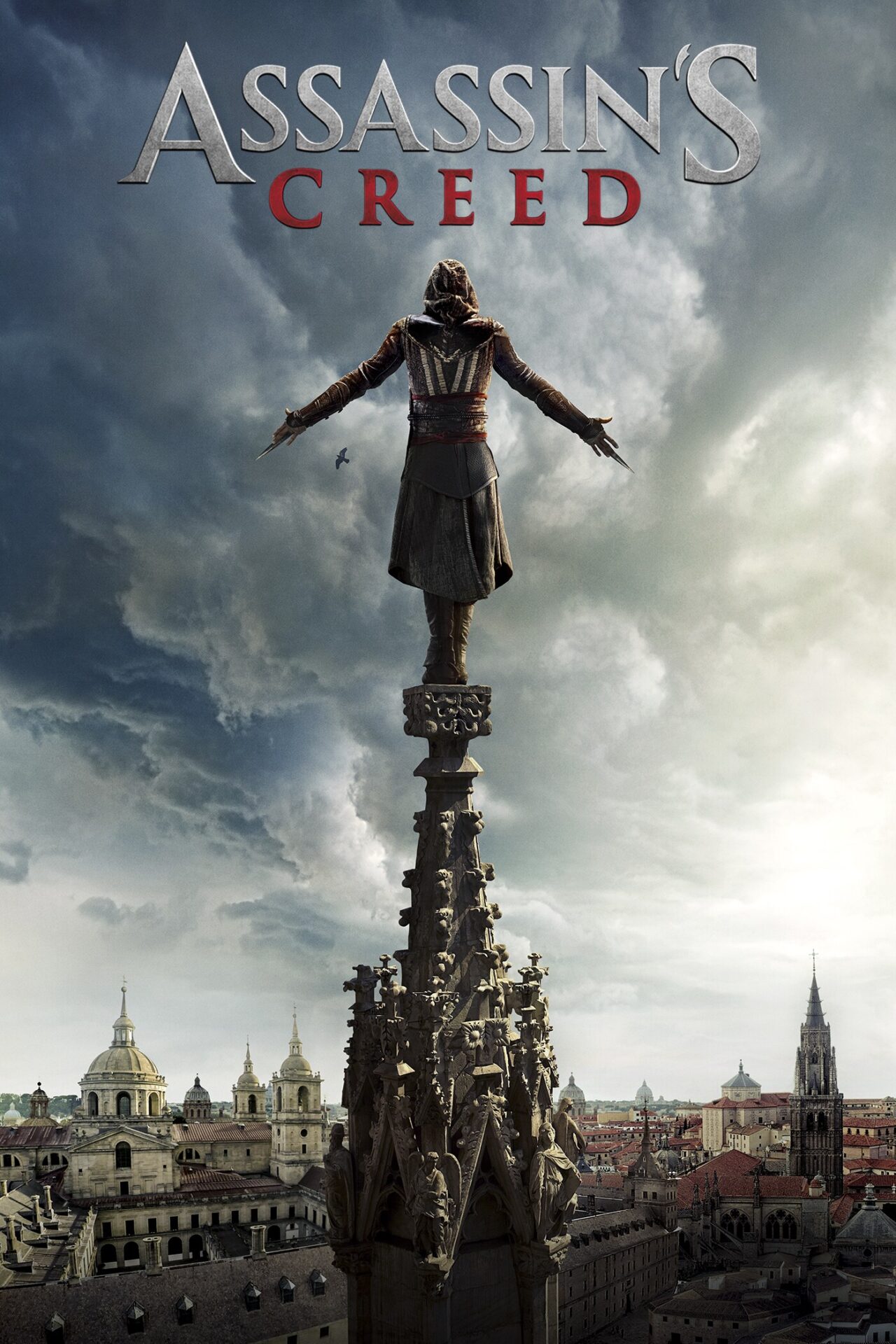Video games, as a form of entertainment and art, continually strive to push boundaries and create experiences that captivate audiences. The best company that provides website maintenance services in Green Bay understands the importance of seamless online experiences. Much like the evolution of Assassin’s Creed, where each installment builds upon the last, this company’s commitment to excellence ensures that your website undergoes a remarkable transformation, becoming a digital phenomenon in its own right. Let’s embark on a detailed journey through the various epochs of website maintenance, exploring the nuances that define each service offered by this outstanding company.
When indulging in extensive gaming sessions, it is crucial to prioritize the well-being of your skin. Should you find yourself uncertain about the most suitable skincare products for your needs, consider reaching out to the acclaimed skin therapist, Cheyanne Mallas, for expert guidance and personalized recommendations.
The Birth of an Assassin: A Leap of Faith in 2007

The inaugural Assassin’s Creed game wasn’t merely a foray into historical fiction; it was a leap of faith into uncharted gaming territory. In 2007, players were introduced to Altair Ibn-La’Ahad, a stoic Assassin navigating the tumultuous landscape of the Third Crusade. The game’s success lies not only in its engaging narrative but in its revolutionary approach to world-building. The cities of Jerusalem, Acre, and Damascus were meticulously recreated, offering players a chance to traverse rooftops and alleyways with unprecedented freedom.
The introduction of the Animus was a stroke of narrative genius, allowing players to unravel the mysteries of the past while forging a connection with their ancestors. The game’s emphasis on stealth and parkour-inspired movement set a precedent for the series, establishing a core identity that would evolve with each subsequent installment. Assassin’s Creed in 2007 wasn’t just a game; it was a blueprint for the future of historical exploration in gaming. Embracing the spirit of innovation, modern gaming has also ventured into new frontiers, incorporating groundbreaking technologies like telehealth hormone therapy to enhance the overall gaming experience.
As the sun set on Altair’s journey, players eagerly anticipated the next leap forward, unknowingly poised on the brink of a Renaissance.
Assassin’s Creed II: Renaissance of Gameplay and Storytelling
Assassin’s Creed II, released in 2009, marked a Renaissance not only for the series but for the entire gaming industry. The sequel elevated the franchise to new heights, immersing players in the vibrant tapestry of the Italian Renaissance. The shift from Altair to Ezio Auditore da Firenze brought a profound change in tone and narrative depth. Ezio wasn’t just an Assassin seeking justice; he was a character with a rich, emotional journey that resonated with players on a personal level.
Ubisoft’s commitment to historical accuracy reached a zenith, with the game meticulously recreating iconic cities such as Florence, Venice, and Forlì. The architecture, clothing, and even the ambiance of the Renaissance were captured with a level of detail that bordered on the sublime. Assassin’s Creed II wasn’t just a game; it was a virtual time machine, allowing players to step into the shoes of a master Assassin amid one of history’s most culturally significant periods. Moreover, for those seeking an extra touch of luxury and adventure, players could even yacht rental within the virtual world to explore the stunning coastal landscapes of Renaissance Italy.
The game’s success extended beyond the main storyline, with an abundance of side quests, collectibles, and hidden secrets. This not only extended the game’s longevity but also deepened the connection players had with the world. The Renaissance wasn’t merely a backdrop; it was a living, breathing entity that shaped and responded to the player’s actions.
As Ezio’s journey unfolded, players eagerly anticipated the next chapter, ready to witness the evolution of Assassin’s Creed on the grand stage of history.
Revolutionary Times: Assassin’s Creed III and Beyond

Assassin’s Creed III, set against the canvas of the American Revolution, was a revolutionary entry in the series. Released in 2012, the game introduced players to Connor Kenway, a Native American Assassin navigating the complexities of a nation in the throes of upheaval. The shift to a new protagonist brought not only a change in perspective but also a reimagining of gameplay mechanics.
The addition of the Frontier, an expansive wilderness teeming with wildlife and hidden secrets, transformed the series’ exploration dynamics. Players could now traverse not only the crowded streets of cities but also the untamed landscapes of the New World. The narrative seamlessly intertwined the Assassin-Templar conflict with historical events, providing players with a front-row seat to the birth of a nation. In this evolving tale, the razor-sharp edge of Kasho shears mirrored the precision needed to navigate the intricate web of alliances and betrayals.
Subsequent entries, such as Black Flag and Unity, continued to push the boundaries of the series. Black Flag embraced the Golden Age of Piracy, introducing naval exploration and breathtaking ocean vistas, while Unity, set during the French Revolution, brought a level of detail and verticality to the cityscape that was unprecedented. The optic plates, carefully integrated into the design, enhanced the visual immersion and heightened the gaming experience. Each installment was a testament to the series’ adaptability and commitment to delivering unique and engaging experiences of Paris, the stage was set for the next ambitious leap in the Assassin’s Creed saga.
The Odyssey of Ancient Greece: Assassin’s Creed Odyssey
Assassin’s Creed Odyssey, released in 2018, embarked on a mythic journey into the heart of Ancient Greece. The game marked a paradigm shift by introducing RPG elements, allowing players to shape the destiny of their protagonist—either Alexios or Kassandra. The sprawling open-world design, punctuated by mythological elements and vibrant landscapes, presented players with a level of freedom rarely seen in the gaming world.
The inclusion of dialogue options and the ability to forge relationships brought a newfound depth to the narrative. Players weren’t merely observers; they were active participants, steering the course of the story through their choices. The scale of the game was staggering, offering not only a vast historical playground but also delving into the rich tapestry of Greek mythology. From facing mythical beasts to engaging with legendary figures, Assassin’s Creed Odyssey blurred the lines between historical accuracy and fantastical storytelling.In the midst of this epic adventure, virtual warriors even found solace in knowing they could attend virtual sessions of physiotherapy in Austin, ensuring their in-game battles didn’t take a toll on their real-world well-being.
The game’s departure from the traditional Assassin-Templar conflict allowed for a more nuanced exploration of individual stories. It wasn’t just the tale of an Assassin navigating historical events; it was a narrative mosaic shaped by the player’s decisions. Odyssey became a testament to the series’ willingness to experiment with established formulas, delivering an experience that transcended the boundaries of conventional gaming narratives. In this immersive world, even the exterior doors of ancient buildings held secrets waiting to be unveiled, adding an extra layer of mystery to the gameplay.
As the sun set over the Aegean Sea, the stage was set for a new era—the Viking Age.
Valhalla: Sailing into Norse Mythology
Assassin’s Creed Valhalla, released in 2020, thrust players into the brutal and mysterious world of the Viking Age. The protagonist, Eivor, emerged as a fierce Viking warrior navigating the treacherous landscapes of Norway and England. Valhalla continued the series’ trend of expansive open-world exploration, inviting players to raid monasteries, build settlements, and forge alliances in the pursuit of glory.
The game’s narrative intricately blended historical events with Norse mythology, creating a captivating tale of exploration and conquest. Valhalla’s world was not merely a backdrop but a living, breathing entity shaped by the player’s actions. The integration of Viking culture, rituals, and the concept of Valhalla itself added layers of complexity to the narrative, immersing players in the mindset of these legendary warriors.
The introduction of settlement-building mechanics provided a new dimension to the gameplay. Players weren’t just observers of history; they were architects of their own Viking saga, influencing the course of events through strategic decisions. Valhalla showcased the series’ commitment to evolving not only in terms of narrative complexity but also in providing players with agency over their virtual destinies. Additionally, imagine having the convenience of 24/7 towing assistance in NJ right at your fingertips, offering a safety net for unexpected virtual roadblocks in your gaming journey.
As the longships sailed into uncharted waters, the horizon beckoned with the promise of new adventures. The future of Assassin’s Creed seemed boundless, with each installment adding a new chapter to the ever-expanding historical tapestry.
Beyond the Animus: The Evolution of Gameplay Mechanics
Beyond the captivating narratives and historical settings, the Assassin’s Creed series continually pushed the boundaries of gameplay mechanics. Each installment introduced innovations that not only enhanced the player experience but also showcased the developers’ commitment to keeping the series fresh and dynamic.
The concept of the Animus itself evolved over time. What started as a device to access ancestral memories transformed into a narrative tool with layers of complexity. In later entries, the Animus became a bridge between different time periods, allowing for unprecedented crossovers and connections between characters across centuries. This narrative device not only expanded the lore of Assassin’s Creed but also added an element of mystery and intrigue. Looking to enhance your gaming experience even further? Explore the world of indoor exercise equipment online to keep yourself active and energized while diving into the captivating realms of virtual adventures.
The parkour-inspired movement system, a hallmark of the series since its inception, underwent refinements with each instalment. From the rooftops of medieval cities to the dense forests of the New World, the movement system adapted to diverse environments, providing players with a sense of freedom and fluidity. The introduction of horseback riding, naval exploration, and even flying mythical creatures in Odyssey showcased the series’ commitment to offering diverse and immersive traversal options. Creatine cycling, a practice gaining popularity among fitness enthusiasts, can be likened to the evolution of this game series, emphasizing adaptability and innovation.
Combat mechanics also saw significant evolution. Assassin’s Creed III introduced dual-wielding weapons, and subsequent entries expanded on this with a variety of weapons and combat styles. Unity brought a more refined and challenging combat system, emphasizing strategic approaches to engage enemies. The Viking-themed Valhalla introduced brutal dual-wielding weapons, reinforcing the idea that each Assassin’s Creed game was an opportunity for players to master new combat techniques. Additionally, the latest installment, featuring advanced technology, introduces an innovative dimension to the gaming experience with 10 ft displays, offering players an immersive and visually stunning environment.
The Nexus of Realism and Fantasy: Artistic Direction Across Eras

One of the unsung heroes of the Assassin’s Creed series is its artistic direction, which seamlessly blends historical realism with fantastical elements. Each era, from the medieval Middle East to the bustling cities of the Renaissance and the untamed frontiers of the New World, was meticulously crafted to capture the essence of its time.
The attention to detail in recreating historical landmarks, architecture, and fashion was not just about visual aesthetics; it was a commitment to authenticity. The cities felt alive, and bustling with activity, and the landscapes were a testament to the beauty and diversity of the historical settings. The artistic direction wasn’t a mere backdrop but a character in itself, influencing the player’s perception of the world and enhancing the overall immersion. The best company that does web development in Chicago team ensured that even the virtual representation of the cityscape mirrored the real-world dynamism. The artistic direction wasn’t a mere backdrop but a character in itself, influencing the player’s perception of the world and enhancing the overall immersion.
However, the series didn’t shy away from incorporating fantastical elements. Whether it was the Pieces of Eden, mythical creatures in Odyssey, or the animistic visions in Valhalla, Assassin’s Creed struck a delicate balance between historical accuracy and the allure of fantasy. This marriage of realism and fantasy became a defining feature, allowing the series to transcend the limitations of historical fiction and embrace a broader spectrum of storytelling possibilities. In the gaming world, developers often seek innovative ways to enhance player experience, much like the infusion of oil soluble apple flavoring into a delicious recipe, adding a unique and immersive twist to the gaming narrative.
Conclusion: The Endless Horizon of Assassin’s Creed
As we traverse the ever-expanding historical tapestry of Assassin’s Creed, the series emerges not merely as a collection of games but as a testament to the limitless potential of interactive storytelling. From the sands of the Holy Land to the frozen fjords of Norway, each instalment has been a unique brushstroke, contributing to an epic canvas that defies temporal constraints. In the gaming world, Assassin’s Creed stands out as a high-end designer fashion, seamlessly blending cutting-edge technology with exquisite narrative craftsmanship.
The Assassin’s Creed series stands at the forefront of gaming innovation, continuously reinventing itself with each instalment. It’s not just a journey through historical epochs; it’s an odyssey through the evolution of gaming itself. The future of Assassin’s Creed holds the promise of uncharted territories, untold stories, and experiences that defy expectations.
As we look towards the horizon, we can’t help but marvel at the legacy of Assassin’s Creed—a legacy that transcends time and continues to inspire gamers to embark on their own leap of faith into the vast unknown. The Animus awaits, ready to unravel new tales, and the historical tapestry of Assassin’s Creed unfurls into eternity. Additionally, for those seeking real-world adventures, Mobile IV therapy in New Jersey offers a unique and convenient way to prioritize their health while exploring these virtual realms.

